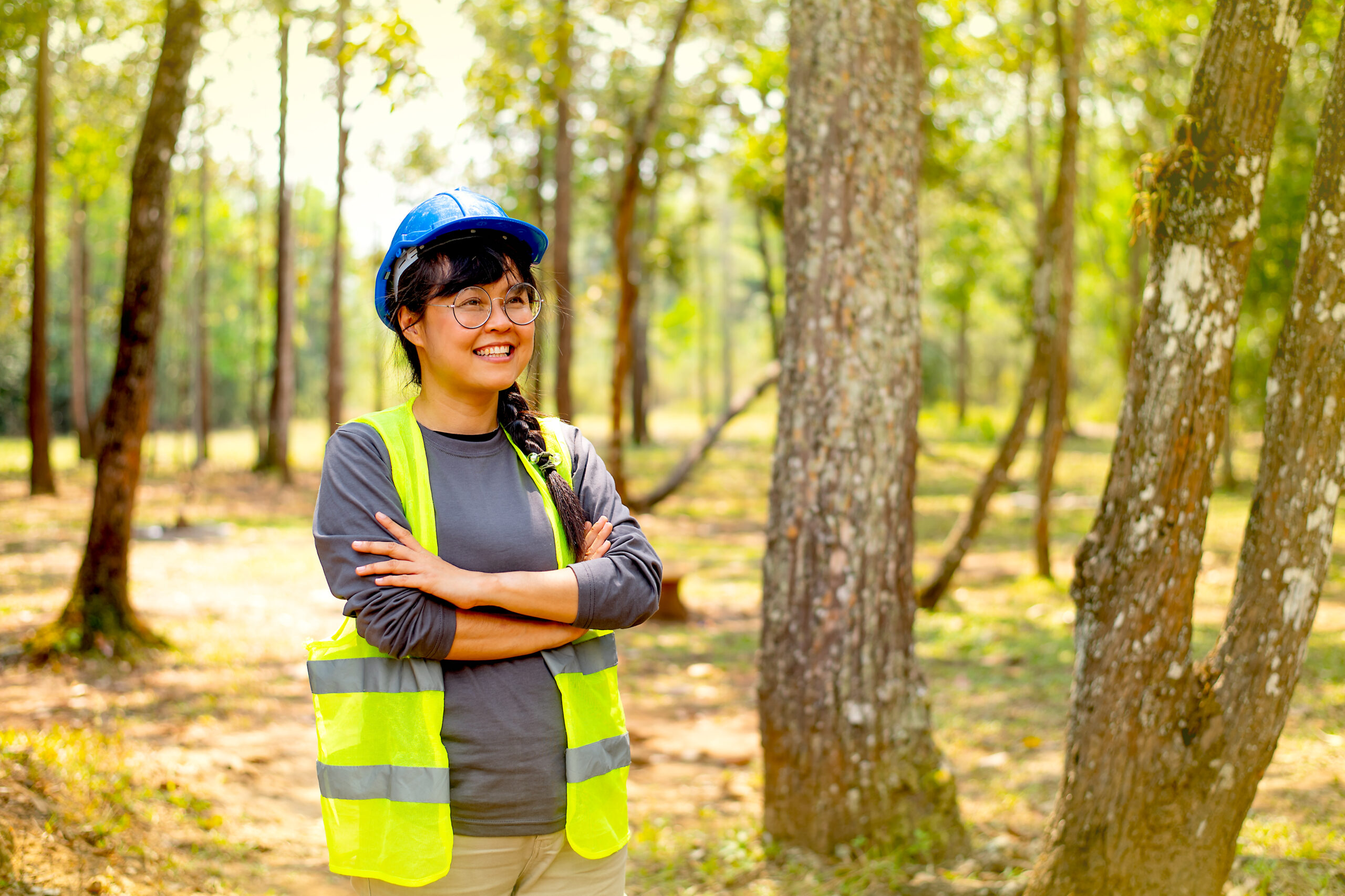If you’ve ever needed help with trees on your property, you’ve probably come across two roles that sound similar but do very different things. The arboricultural consultant vs tree surgeon comparison can be confusing at first glance. One focuses more on planning, reports, and long-term tree care strategies, while the other handles physical tasks like pruning or removing trees. Knowing who does what can save you time, money, and stress – especially if you’re dealing with protected trees or planning a build near large roots. Let’s break down what each expert actually does and when you might need to call them.
Roles and Responsibilities
An arboricultural consultant focuses on giving advice about trees. They inspect tree health, study site conditions, and write reports. These reports often help with planning applications or legal matters. Their job is to guide decisions about which trees to keep, remove, or protect. They use knowledge of tree biology, soil conditions, and local rules.
Consultants also help developers plan around existing trees. If a building project might affect roots or branches, the consultant gives instructions to reduce harm. Councils often ask for their input when checking if a site meets safety or environmental rules.
A tree surgeon does something different. This person works outdoors using tools like chainsaws and ropes. Their tasks include trimming branches, taking down dead trees, and clearing storm damage. While they may spot signs of disease or decay during a job, they don’t usually write formal assessments.
Tree surgeons climb trees to remove parts safely without causing damage below. Some also grind stumps after removal or shape hedges for better growth. They follow safety rules because the tools can be risky.
So when comparing arboricultural consultant vs tree surgeon, it’s clear each has a separate role in managing trees. One offers written guidance based on training and research; the other performs hands-on tasks that require strength and skill.
Both roles need experience but in different ways – consultants rely more on study while surgeons depend on physical ability and practical know-how gained over time.
Understanding these differences helps people choose the right expert for what they need – whether that’s advice before construction starts or someone to safely cut back overhanging limbs from a garden path.

Qualifications and Training
Training paths for these two roles take different directions. An arboricultural consultant usually starts with a degree in arboriculture, forestry, or a related subject. Some also study environmental science or horticulture. These programs often include plant biology, soil science, tree health, and legal rules about trees in urban areas.
Consultants need to know how trees grow and how they react to stress or damage. They also learn how tree roots interact with buildings and roads. Understanding local laws is part of the job too – especially when giving advice on protected trees or planning permissions.
On the other hand, a tree surgeon follows more hands-on training. Many attend vocational courses that teach how to use chainsaws safely, climb trees using ropes, and remove branches without causing harm. Safety plays a big role in this training since the job involves heights and heavy tools.
Tree surgeons might earn certifications from trade bodies like NPTC (National Proficiency Tests Council) or LANTRA in the UK. These show they can handle equipment correctly and follow safety rules on site.
While consultants write reports and give expert opinions based on research and inspection, tree surgeons focus on doing physical tasks like pruning or removing damaged limbs. That’s why their learning focuses more on technique than theory.
The difference between arboricultural consultant vs tree surgeon becomes clear through their preparation for the job. One spends time understanding complex systems around trees; the other builds skills needed to carry out practical tasks safely.
Both need experience over time to get better at what they do. But their routes into those roles highlight what each one brings to the table – whether it’s technical insight or physical ability backed by certified training.
When to Hire
Knowing the right time to bring in either a tree surgeon or an arboricultural consultant can save time and prevent mistakes. These two professionals do different jobs, so it helps to understand what each one handles.
Call a tree surgeon when you need practical tasks done. This includes trimming overgrown branches, removing dead limbs, or cutting down trees that pose safety risks. If a storm knocks down part of a tree or leaves hanging limbs, this is the person to contact. They use tools like chainsaws and climbing gear to carry out physical labor on-site.
A tree surgeon also handles regular upkeep. If your trees look unbalanced or grow too close to power lines, they can shape them properly. Their focus stays on health through direct action – cutting, pruning, or removing as needed.
On the other hand, hire an arboricultural consultant when you need advice backed by reports or inspections. Suppose you’re building something near large trees – like putting up a house extension – or submitting plans for development approval. In that case, local councils may ask for expert input from someone qualified in tree assessments.
Consultants produce written evaluations after looking at species type, root systems, soil conditions, and long-term growth patterns. They don’t cut branches but give detailed information about how certain actions might affect nearby trees over time.
The choice between an arboricultural consultant vs tree surgeon depends on your goal: action versus analysis. One works with equipment; the other works with data and planning tools.
If there’s legal trouble – like neighbour disputes over falling branches or questions about protected species under council rules, you’ll likely need documents only consultants can provide.
Think of hiring based on what outcome you want: hands-on care or expert guidance supported by facts and inspection results. Matching the task with the right role avoids wasted effort and ensures proper treatment for your green spaces.

Tools of the Trade
A tree surgeon works with gear that helps them climb, cut, and remove parts of trees. They often use chainsaws for cutting branches or trunks. Safety harnesses, ropes, and helmets help them move around trees and stay secure while working high off the ground. Rigging equipment lets them lower large limbs safely to the ground without damage to property underneath. Sometimes they also bring wood chippers to break down debris into smaller pieces.
An arboricultural consultant uses a different set of tools. Their job focuses more on inspecting trees than cutting them. They rely on GPS units to map tree locations and keep records accurate. Many use software that helps assess a tree’s structure or health over time. This lets them track changes and give advice based on facts, not guesses.
Consultants also carry kits that test soil conditions or detect signs of disease in leaves or bark. These kits may include probes for checking root moisture levels or devices that listen for decay inside trunks using sound waves.
The contrast between an arboricultural consultant vs tree surgeon becomes clear when looking at their toolkits. One carries sharp tools for hands-on tasks like pruning or removal. The other brings data-collecting tools used to study growth patterns and suggest care plans.
While both roles deal with trees every day, their equipment shows how different their focus is. The gear they carry matches what they’re trained to do – one solves physical problems onsite; the other gives advice based on research and testing results.
Choosing the Right Tree Expert for the Job – Arboricultural Consultant vs Tree Surgeon
Now that we’ve explored the key differences, it’s clear that while both professionals care for trees, their roles serve very different purposes. Arboricultural consultants focus on planning, tree health assessments, and legal or environmental guidance, while tree surgeons handle the hands-on physical maintenance and removal of trees. Their qualifications, tools, and when you might hire each one all reflect this divide. So when faced with a tree-related issue, understanding the arboricultural consultant vs tree surgeon distinction can save you time, money – and potentially your trees. Knowing who to call makes all the difference in getting expert help.

